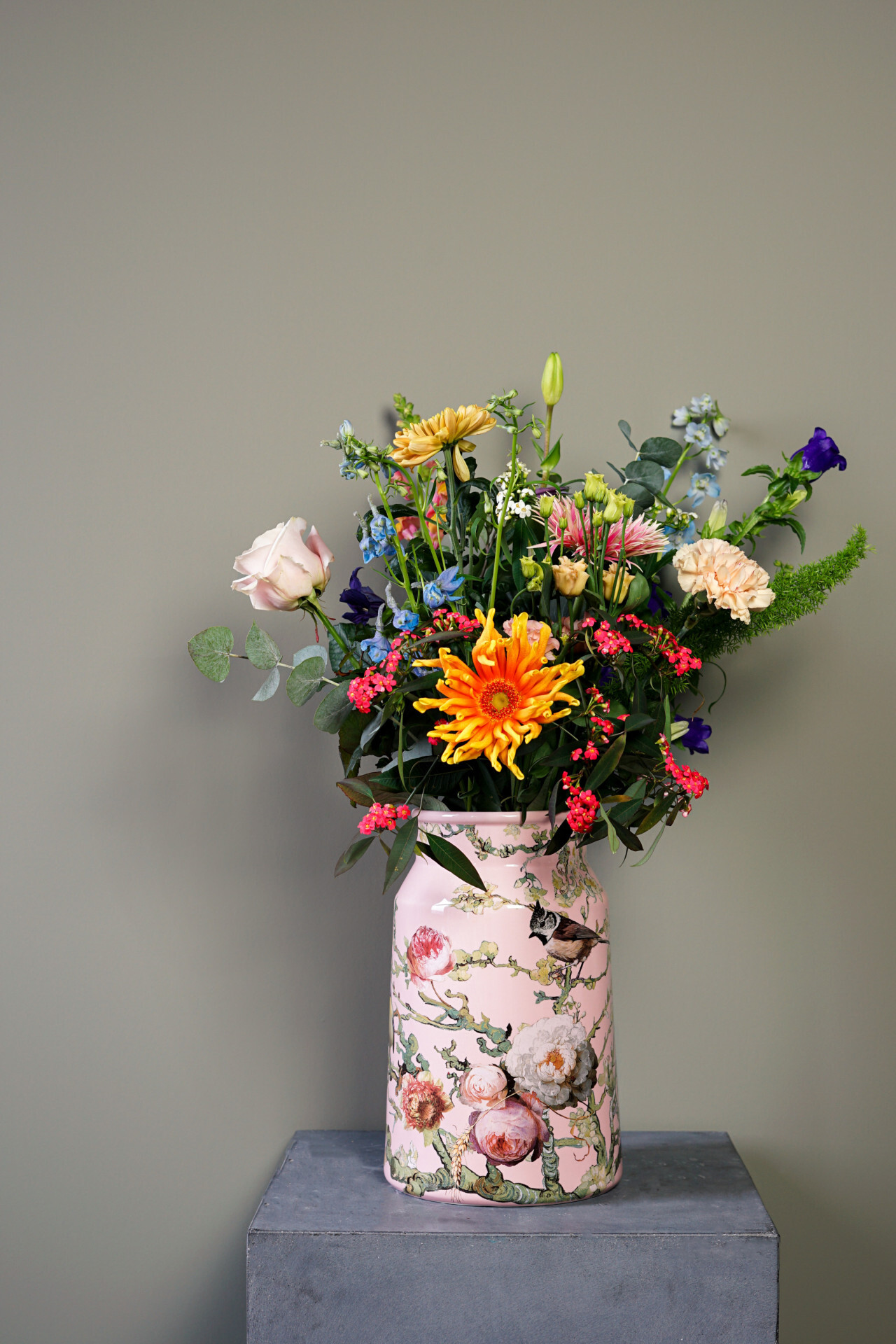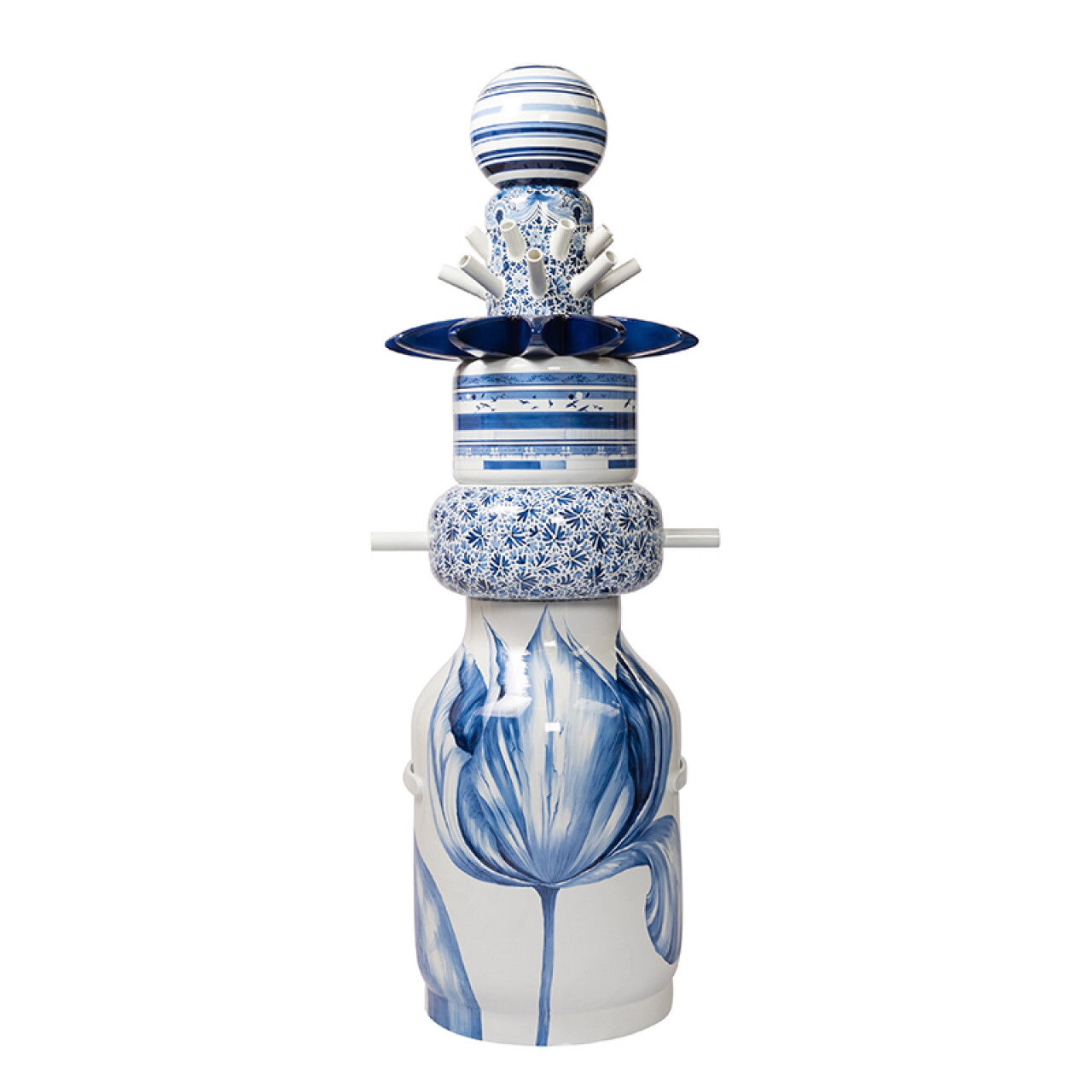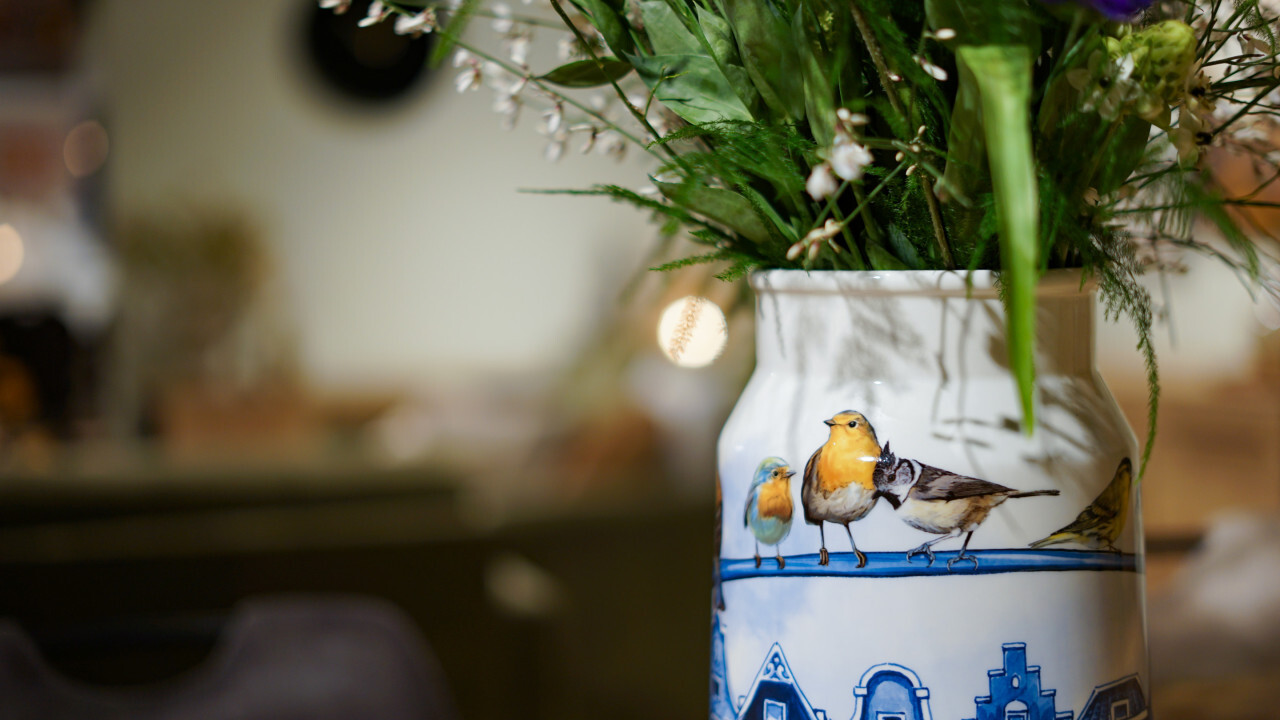New in our collection! Vases in the shape of an old Dutch milk churn. This nostalgic milk churn is a nice model for a brand new flower vase, in which you can store a large bouquet of meadow flowers. A piece of rustic charm for the kitchen table.

Nostalgic, old Dutch milk churns
The sun is slowly creeping up in the sky. A lazy mist slumbers above the green meadows and seems to evaporate at the touch of the first rays of sunlight. Under the pastel orange sky, a cow moos contentedly because the farmer has just emptied her overflowing udders. The weathered steel milk cans are filled to the brim with creamy milk and sit along the sandy driveway of the small dairy farm, waiting to be picked up by the dairy factory. A hungry kitten tries in vain to reach the fresh milk and falls off the edge of the milk churn after every jump. After hours of standing in the morning sun, the horse and cart finally arrives and the heavy milk churns are lifted from the country road into the wooden cart. On to the dairy factory to make cheese and butter.

Milk churns with the charm of the farm
In the first half of the 20th century it was a typical image of the farmer identity of the Netherlands. The landscape was dotted with small farms where milking took place every day. The dairy farmers put their iron milk cans in groups along the side of the road, where they were picked up by the wagons to take them to the milk factory. Sometimes the milk was sour before it reached the factory and occasionally a drowned kitten was found in it, having tried to snack on the milk. The idyllic image of weathered steel milk cans at the farmyard driveway quickly disappeared from 1962, when the refrigerated milk tank made its debut. Only in one town in the Netherlands were the original milk cans still in use until 1999, when this dairy factory also stopped accepting milk cans. The milk churns that became redundant were used on and around the farm for all kinds of other purposes, including as decorative pieces and large vases.
Milk churn vase full of Dutch history
Dutch history and identity are woven into the DNA of Heinen Delfts Blauw. That's why we decided to give those old steel milk cans a new life in the form of porcelain milk churn vases. The shape of the vase is immediately recognizable as a milk churn, but we have omitted the lid and handles to give the milk churn vase a modern look. The result is a sturdy vase of a large size, but with a nostalgic and charming warmth. The four different milk churn vases each have their own style and appearance. Two milk churn vases have a Delft blue decoration that runs around the vase. On one Delft blue milk churn vase, colorful forest birds are hidden between the Delft blue branches. The other milk churn vase has an urban decoration with Delft blue canal houses and the same birds that now rest on a lamppost. The other two vases are available in black and pink, and are decorated all around with lush and colorful flowers. A lot of Dutch history and culture comes together in these special milk churn vases.

Milk churn vase as art object
Our very first milk churn vase is a special art object by designer Richard Hutten for Heinen Delfts Blauw. The milk churn vase first stands out because of its size of no less than 1.5 meters high and its special shapes. The milk can vase is made up of six separate objects, each with its own shape, atmosphere and story. "The Stapel Blauw milk churn vase is a layered design in which each part of the object tells its own story and all those stories come together in the total picture. The theme for this art object was 'the farm'. As a boy I regularly walked around my uncles' dairy farms. That gave me the idea to style a 65 cm high milk churn as a basis for the Stapel Blauw milk churn vase. I applied all the features, such as the handles and the milk churn lid. I chose a large image of a tulip from the collection of the Rijksmuseum." On top of the milk churn vase is a stylized shape of a milk strainer, followed by a modern, cylindrical object with ceramic udders that only emerge when that part is lifted. An abstract, dark blue field flower rests on top of it and when you lift it, the paint seems to drip from underneath. On top of the field flower is a contemporary variant of the 17th century tulip vase. The top features a spherical shape with lines of various shades of Delft blue. This design is reflected in the 'Nieuw Blauw' vase collection by Richard Hutten for Heinen Delfts Blauw, where the lines are at exactly the same height, which creates an abstract, continuous landscape.
Share article





